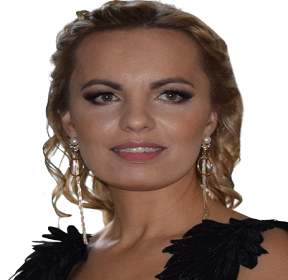
Anna Ewa Kuc
PolandTitle: Methods of Anterior Torque Control during Retraction: A Systematic Review
Abstract:
Background: There are various methods of controlling the inclination of the incisors during retraction, but there is no evidence as to the advantages of some methods over others. Research conducted by our team related to the review of the available literature identified several methods with varied effectiveness of torque control during anterior teeth retraction.
Methods: In the study of the available literature that was qualified to our study we included the patients with complete permanent dentition with the examined the maxillary incisor torque after and before retraction with straight-wire appliance and different modes of torque control where statistically significant differences in torque values of the upper incisors after orthodontic treatment were observed. The literature of our research were subjected to risk of bias and quality analyses with the ROBINS-I protocol and the modified Newcastle–Ottawa QAS, respectively
Results: Despite numerous articles published in reputable scientific journals (580 subjects) only 13 articles could be selected because only they met our criteria. All authors recognized that incisors were retroclined during retraction by 2.46° (mean difference), which was statistically significant. Statistical analysis confirmed that the differences in torque between the study group and the control group were statistically significant in most of research. We assessed our research for heterogeneity of articles in relation to their impact on the significance of the analysis performed.
Conclusion: As a result of the analysis conducted by our team we recognized that both properly performed corticotomy and en-masse retraction using orthodontic microimplants seem to be the most effective and scientifically validated methods of torque control. Just after the publication of our research an article “En-Mass Retraction of Maxillary Anterior Teeth with Severe Proclination and Root Resorption—A Case Report” appeared which also discussed the advanced retraction of incisors with the use of Tads and evaluate the difference in their inclination.
Biography:
Anna Ewa Kuc graduated from medical studies in 2004 year. She completed the specialization with a highly passed exam. Thus, she obtained the title of a specialist in prosthetics. Then she started education in the field of orthodontics and completed the 3-year postgraduate studies in orthodontics at the University of Austria in Krems, obtaining the title of Master of Science in Orthodontics. She participated in many specialist courses and trainings in the field of occlusion and orthodontics as well as treatment biomechanics with world-class lecturers. She did a specialization in orthodontics at the Specialist Dental Clinic of the Medical University of Bialystok. She connected scientifically with Wroclaw Medical University. The combination of extensive knowledge in both areas of orthodontics and prosthetics as well as many years of experience has opened the possibility for comprehensive treatment of patients and full orthodontic and prosthetic diagnosis of occlusion and malocclusion as well as often overlooked problems in the temporomandibular joints, i.e. crackling, jumping or pain, which many complain about patients, and which result from forced occlusion inconsistent with the central relation in TMJ. Thanks to this, She is able to help many patients with dysfunction of the temporomandibular joints and always use the growth potential of children and adolescents and she focus not only on eliminating the malocclusion, but also the causes of its occurrence.
She deals with orthodontic treatment of children, adolescents and adults with fixed and removable appliances. Anna always strive to recreate the natural shape of the teeth, correct occlusion (bite) and perceive the entirety of oral problems from all dental fields, including them in a comprehensive treatment plan so as to maintain the effects of treatment over a long period of time.

